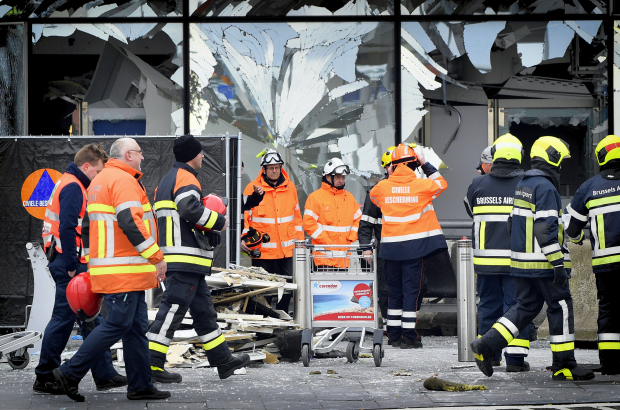- Daily & Weekly newsletters
- Buy & download The Bulletin
- Comment on our articles
Former Nato HQ preparing to host March 2016 terror attacks trial
The North Atlantic Treaty Organisation (Nato) moved to its new headquarters two years ago and, since then, its former home has lain empty. But the site will soon be active again and the focus of huge media attention next month when it plays host to Belgium’s largest-ever courtroom – the venue for the trial of those accused of being involved in the plot that led to the bomb attacks in March 2016 at Brussels Airport and the Brussels metro.
The former Nato headquarters on the outskirts of the Belgian capital, to be renamed The Justitia, will be the scene in which a Brussels court will rule next month on who will go to trial and on what charges. The actual trial relating to the attacks, expected to be the biggest in Belgian history, is expected to take place in 2022 and last about six months. Until then, the buildings at Nato will be used for other important meetings and procedural hearings in connection with the attacks or other trials.
The main aim of the move to the former Nato site is to relieve congestion in the current courthouse, the Palace of Justice on Place Poelaert in central Brussels, which is unable to accommodate several hundred people involved in the same case, especially during the current pandemic and its consequent physical distancing measures.
It has been suggested that the number of civil parties alone – those who have the right to attend the trial – will be more than 900. Additionally, the international media will surely be following the case closely from the Belgian capital, which is already home to the second-largest press corps in the world after Washington.
Also, a major terrorism trial held at the Palace of Justice would cause significant disruption to the centre of Brussels with all its additional security.
According to Wenke Roggen of the federal public prosecutor’s office: "If we had held those large trials in the Justice Palace, it would have required adjustments. And those trials risked paralysing the entire Palace. So this is really a relief for the Palace of Justice.”
The former Nato site remains in good condition. After housing such a high-profile organisation, the site is also very secure: an open perimeter surrounded by fencing, every inch covered by security cameras, with one single entrance that can be easily guarded. But a lot of things still need to be considered, admits Roggen.
"There must be checkpoints, cells and a specific entrance for people who appear in custody, access for staff, entry for citizens who would attend the trial, places for journalists, et cetera,” she says. “All of this must be practical and above all secure."
However, time is running out to get the site up and running before the first meeting in the courtroom, housed in the former council chamber, the main meeting room for representatives of the 30 Nato member states and their entourages. This meeting, to consider the trial of the suspects of the attacks of 22 March 2016, is due to run from 7-18 December. It has already been postponed several times due to the Covid-19 crisis.
“I have been assured that it is possible and that it will work,” Roggen said. “(The contractors) are doing everything possible. So I am confident.”



















